
The history of the Republic of the Congo has been marked by diverse civilisations: Indigenous, French and post-independence.

Brazzaville is the capital and largest city of the Republic of the Congo. Administratively, it is a department and a commune. Constituting the financial and administrative centre of the country, it is located on the north side of the Congo River, opposite Kinshasa, the capital city of the Democratic Republic of the Congo.
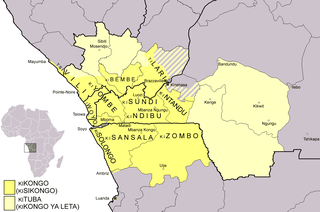
Kongo or Kikongo is one of the Bantu languages spoken by the Kongo people living in the Democratic Republic of the Congo (DRC), the Republic of the Congo, Gabon, and Angola. It is a tonal language. The vast majority of present-day speakers live in Africa. There are roughly seven million native speakers of Kongo in the above-named countries. An estimated five million more speakers use it as a second language.
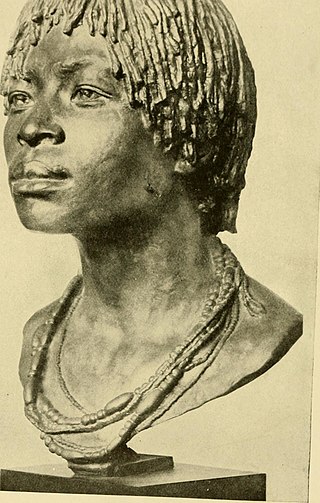
The Kongo people are a Bantu ethnic group primarily defined as the speakers of Kikongo. Subgroups include the Beembe, Bwende, Vili, Sundi, Yombe, Dondo, Lari, and others.

AbbéFulbert Youlou was a laicized Brazzaville-Congolese Roman Catholic priest, nationalist leader and politician, who became the first President of the Republic of the Congo on its independence.

The Teke people or Bateke, also known as the Tyo or Tio, are a Bantu Central African ethnic group that speak the Teke languages and that mainly inhabit the south, north, and center of the Republic of the Congo, the west of the Democratic Republic of the Congo, with a minority in the south-east of Gabon. Omar Bongo, who was President of Gabon in the late 20th century, was a Teke.

Pool is a department of the Republic of the Congo in the southeastern part of the country. It borders the departments of Bouenza, Lékoumou, and Plateaux. Internationally, it borders the Democratic Republic of the Congo. It also surrounds the commune district of the national capital, Brazzaville.

The Kingdom of Loango was a pre-colonial African state, during approximately the 16th to 19th centuries in what is now the western part of the Republic of the Congo, Southern Gabon and Cabinda. Situated to the north of the more powerful Kingdom of Kongo, at its height in the 17th century Loango influence extended from Cape St Catherine in the north to almost the mouth of the Congo River.
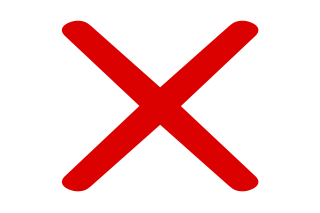
The Kingdom of Kongo was a kingdom in Central Africa. It was located in present-day northern Angola, the western portion of the Democratic Republic of the Congo, Southern of Gabon and the Republic of the Congo. At its greatest extent it reached from the Atlantic Ocean in the west to the Kwango River in the east, and from the Congo River in the north to the Kwanza River in the south. The kingdom consisted of several core provinces ruled by the Manikongo, the Portuguese version of the Kongo title Mwene Kongo, meaning "lord or ruler of the Kongo kingdom", but its sphere of influence extended to neighboring kingdoms, such as Ngoyo, Kakongo, Loango, Ndongo, and Matamba, the latter two located in what is Angola today.

The Bemba belong to a large group of Bantu peoples, primarily in the Northern, Luapula, Muchinga and the northern Central Province of Zambia. The Bemba entered Zambia before 1740 by crossing the Luapula River from Kola. Several other ethnic groups in the northern and Luapula regions of Zambia speak languages which are similar to Bemba, but have different origins. The Bemba people are not indigenous to Copperbelt Province; they arrived there during the 1930s due to employment opportunities in copper mining.
Kituba is a widely used lingua franca in Central Africa. It is a creole language based on Kikongo, a Bantu language. It is a national language in Republic of the Congo and Democratic Republic of the Congo.
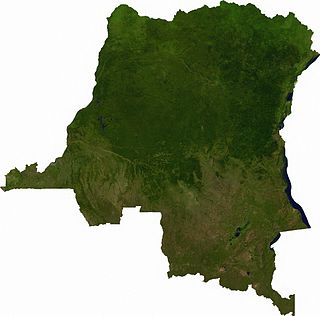
Articles related to the Democratic Republic of the Congo include:

The Beembe are a Bantu people living in southern Congo-Brazzaville, precisely in Bouenza and in the cities of Brazzaville, Dolisie, and Pointe-Noire. It is a Kongo subgroup. The Beembe have some similar customs to the Kongo, which is what makes them a subgroup, but their art is what separates them apart. It is not clear when the Beembe separated from the Kongo but oral tradition suggests that it was some time around the eight century. They migrated Northeast from the Kongo and settled some five hundred kilometers from the capital of the Kingdom of the Kongo. This group was a part of the Kongo Kingdom during its height of power. The Beembe also have subgroups within it such as the Bisi-Nseke, Minkegue, Mmsumbu (Bambumbu), the Mongo, and the Musitu.Beembe society is economically based on agriculture.

The Republic of the Congo is a country located on the western coast of Central Africa to the west of the Congo River. It is bordered to the west by Gabon, to the northwest by Cameroon, to the northeast by the Central African Republic, to the southeast by the Democratic Republic of the Congo, to the south by the Angolan exclave of Cabinda, and to the southwest by the Atlantic Ocean.

The official language of the Republic of Congo is French. Other languages are mainly Bantu languages, and the two national languages in the country are Kituba and Lingala, followed by Kongo languages, Téké languages, and more than forty other languages, including languages spoken by Pygmies, which are not Bantu languages.

Patrice Yengo is a francophone Congolese political anthropologist living and teaching in Paris, France. He is a specialist of the Congolese Civil War (1993–2002), otherwise known as the Republic of the Congo Civil War. He is originally from Pointe-Noire, Republic of the Congo (Congo-Brazzaville).

The Vili people are a Central African ethnic group, established in southwestern Gabon, the Republic of Congo, Angola and the Democratic Republic of Congo. It's a subgroup of Bantu and Kongo peoples.

Free French Africa was the political entity which collectively represented the colonial territories of French Equatorial Africa and Cameroon under the control of Free France in World War II.
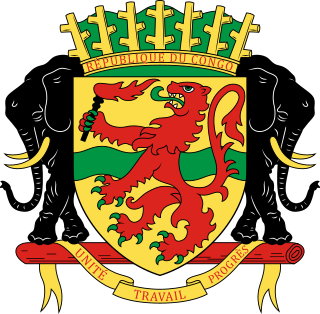
Congolese nationality law is a legal statute regulated by the Constitution of the Republic of the Congo. It determine who is, or is eligible to be, a national of the Republic of the Congo. The legal means to acquire nationality, formal legal membership in a nation, differ from the domestic relationship of rights and obligations between a national and the nation, known as citizenship. Congolese nationality is typically obtained under the principle of jus soli, i.e. by birth in the Republic of the Congo, or jus sanguinis, born abroad to parents with Congolese nationality. It can be granted to persons with an affiliation to the country, or to a permanent resident who has lived in the country for a given period of time through naturalization.

The Sundi are a Central African people established in three countries, in the Republic of Congo – particularly in the Niari department, in the Bouenza department (Boko-Songho) and in the Pool Department –, in Angola (Cabinda) and in the Democratic Republic of Congo. They are considered to be the largest subgroup of the Kongo people. Early in the nineteenth century there were wars between Sundi and Teke when Teke moved southwest into the Niari valley.
• Content in this edit is translated from the existing French Wikipedia article at fr:Lari (peuple)



















